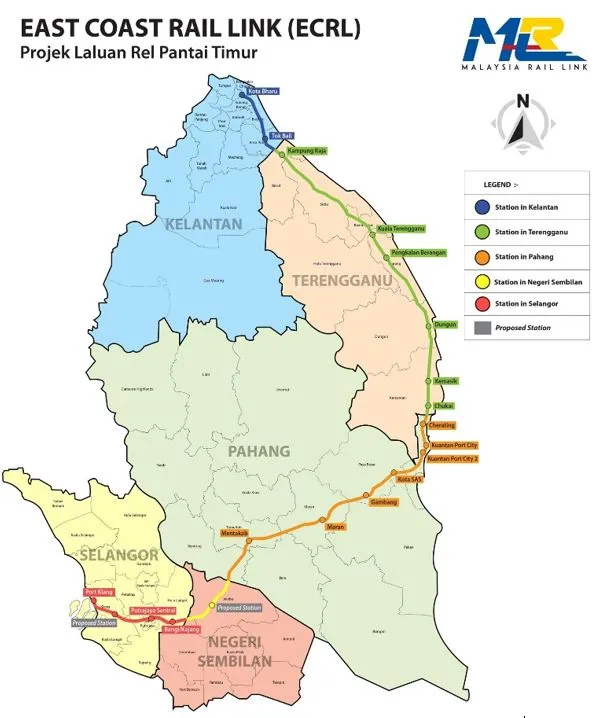

6th July 2024 (11 Topics)
Context
China is taking interest in constructing a pan-Asian railway network to bolster regional connectivity and economic integration across Southeast Asia. This initiative forms a crucial part of China's broader Belt and Road Initiative (BRI). Malaysia’s ECRL project is sometimes linked to a China-led “pan-Asian” railway network that would connect the southern Chinese city and transportation hub of Kunming with Singapore at the tip of the Malaysian peninsula by lines running across multiple Southeast Asian countries.
What is East Coast Rail Link (ECRL)?
- The ECRL is a significant railway project in Malaysia, spanning 665 kilometers from Kota Bharu to Port Klang.
- Originally started in 2017, the project faced funding issues and political obstacles before resuming in 2020.
- It is expected to enhance economic ties and infrastructure development between China and Malaysia.
China’s Pan-Asian Rail Network Plans
- China envisions a comprehensive pan-Asian rail network comprising three main lines:
- Western line: Kunming through Myanmar and Thailand.
- Central line: Laos and Thailand.
- Eastern line: Vietnam, Cambodia, and Thailand. These lines aim to facilitate trade and travel across the region, with potential extensions to connect to Singapore, a key global trade hub.
- Current Status and Challenges: While progress has been made, challenges such as varying railway track widths and economic viability have slowed implementation:
- Laos-China section operational since 2021; other sections facing delays.
- High costs and logistical complexities in Thailand and other countries.
- Questions regarding the economic benefits and demand for rail transport versus maritime shipping.
China's Regional Strategy and BRI
- China's involvement in Southeast Asia through infrastructure investments under the BRI aims to strengthen economic ties and geopolitical influence:
- Significant trade volumes between China and ASEAN underscore economic interdependence.
- Despite concerns over debt and terms of financing, China aims to build goodwill through infrastructure development.
- Geopolitical tensions in the South China Sea influence regional dynamics, with China seeking to balance economic cooperation and territorial disputes.

Fact Box: China’s Belt and Road Initiative (BRI)
|

